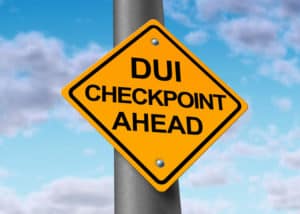 Sobriety and DWI checkpoints can be a touchy subject, but plenty of states still use them as a method to catch drunk drivers, or at least reduce attempts to drive while intoxicated. Missouri is one of those states that allows sobriety checkpoints, under certain guidelines, to increase the presence of law enforcement on the roads and stop a Missouri DWI from becoming a reckless roadtrip.
Sobriety and DWI checkpoints can be a touchy subject, but plenty of states still use them as a method to catch drunk drivers, or at least reduce attempts to drive while intoxicated. Missouri is one of those states that allows sobriety checkpoints, under certain guidelines, to increase the presence of law enforcement on the roads and stop a Missouri DWI from becoming a reckless roadtrip.
While there are always lingering questions about the constitutionality of these efforts, there’s a benefit that outweighs the personal inconvenience of a driver who is caught up in the checkpoint, without a drop of alcohol in their system.
Missouri DWI checkpoint guidelines include directives like:
- Vehicles must not be stopped arbitrarily, but in a focused effort that includes a dedicated area and time for the checkpoint.
- The checkpoint doesn’t legally need to be announced, but it increases the awareness for drivers while reducing their shock or inconvenience.
- There is a method to which cars are stopped, aside from indications of intoxication. An established pattern reduces the concern over profiling vehicles and increases the reach of the checkpoint through timing and availability of law enforcement officers.
Fact check: in Missouri, you cannot roll through a DWI checkpoint by displaying your license and insurance on your window.
If you are stopped during a sobriety or DWI checkpoint in Missouri and are suspected of driving drunk, you will be asked to submit to a breathalyzer test. That’s the very same breathalyzer you’d be asked to use if you are pulled over outside of a sobriety checkpoint. If you refuse the test, you will likely have an automatic ignition interlock requirement on top of any DWI conviction you are facing.
There are two tried and true methods for rounding up Missouri DWI drivers – through regular traffic stops or sobriety checkpoints. Each has the same penalties if you’re intoxicated, and both can be easily avoided by having a plan to get home safely if you’ll be drinking.

Leave a Reply
You must be logged in to post a comment.